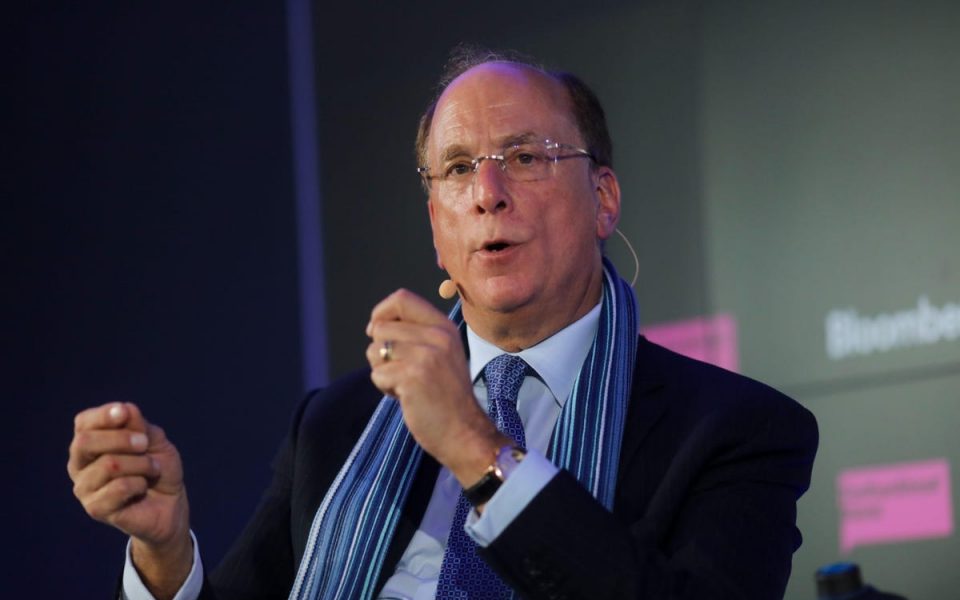BlackRock’s Newest Investment Paves The Way For Digital Assets On Wall Street
Larry Fink thinks Russia-Ukraine war could accelerate the use of digital currencies
© 2020 Bloomberg Finance LP
Five years ago, BlackRock’s chairman Larry Fink famously called bitcoin an “index of money laundering.” In the years since, the world’s largest asset manager, tending some $10 trillion in client funds, has largely stayed away from digital assets.
So when Fink wrote in his annual letter to shareholders, published in late March, that the havoc caused by Russia’s invasion of Ukraine could accelerate the adoption of digital currencies, many interpreted it as a sign that the financial behemoth is finally warming up to crypto.
Now, in addition to managing the primary cash reserves of USD Coin (USDC), a $50 billion digital asset available on blockchains including Ethereum, Solana, Algorand, Stellar, Avalanche and Flow, and pegged to the value of the U.S. dollar, BlackRock has entered into a broader strategic partnership with Boston-based Circle, one of the primary issuers of USDC. This was announced yesterday alongside a $400 million funding round raised by Circle from BlackRock, Fidelity Management and Research, Marshall Wace LLP and Fin Capital. Circle is planning to make a public debut via a SPAC deal, valued at $9 billion, by the end of this year.
While BlackRock declined to comment on the particulars of the deal, according to today’s Q1 earnings call, it is looking at more than just cryptocurrencies and stablecoins, towards asset tokenization and permissioned blockchains. In June, it was reported that BlackRock was looking to hire a blockchain lead.
This partnership is also noteworthy because it is the first digital assets engagement that involves the balance sheet of BlackRock, Inc. itself. Previously, the asset manager was credited with having exposure to crypto through a 7.3% stake in MicroStrategy, the largest corporate holder of bitcoin with nearly $5 billion worth of the cryptocurrency, and a few dozen contracts of CME bitcoin futures, USD cash-settled contracts based on a once-a-day reference rate of the U.S. dollar price of bitcoin. But those investments were made through BlackRock’s subsidiaries or funds that manage clients’ assets.
Speaking to Forbes, CEO of Circle, Jeremy Allaire said the partnership will “explore ways to apply USDC in traditional capital markets.” Though Allaire added that the relationship has been developing for almost a year he did not disclose what percentage of the stablecoin’s reserves BlackRock is managing or other details of the partnership.
Such implementations could help drive additional revenue back to Circle and BlackRock. In financial documents released with the announcement of the revised SPAC deal in February, Circle expects its USDC reserves to generate $438 million in income in 2022, swelling to $2.2 billion in 2023.
The deal is also a major nod of approval to USDC. Its market capitalization has swollen from $4 billion at the beginning of last year to over $50 billion today but has yet to catch up with Tether’s $82.5 billion. Despite the lack of transparency about the size and composition of its reserves and regulatory oversight, Tether managed to maintain its position as a preferred stablecoin among crypto investors in large part due to its early arrival in 2014.
USDC, launched by Circle and Coinbase four years later, was also criticized for its opacity in declaring its reserves, specifically when it came to the size and creditworthiness of commercial paper and corporate bonds underpinning the asset. However, last August it adjusted its risk strategy and pledged to only back the asset with physical cash and treasuries. It has also applied to become a national bank.
Now, with BlackRock’s support, the stablecoin hopes to find a footing as the go-to digital asset for traditional financial institutions and investors.
The collaboration is “potentially a huge step forward in how dollar digital currency can work not just in the digital asset arena, but increasingly also in traditional finance,” said Allaire.
